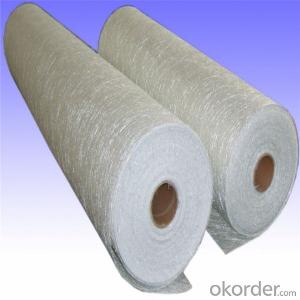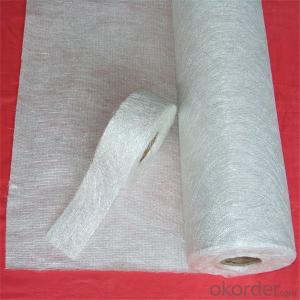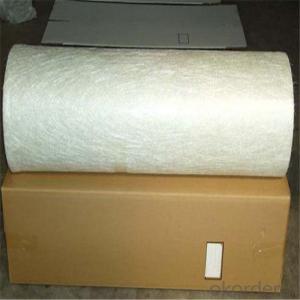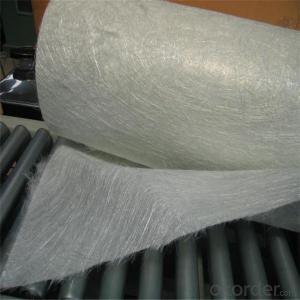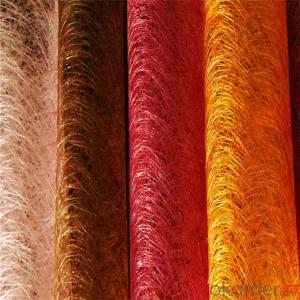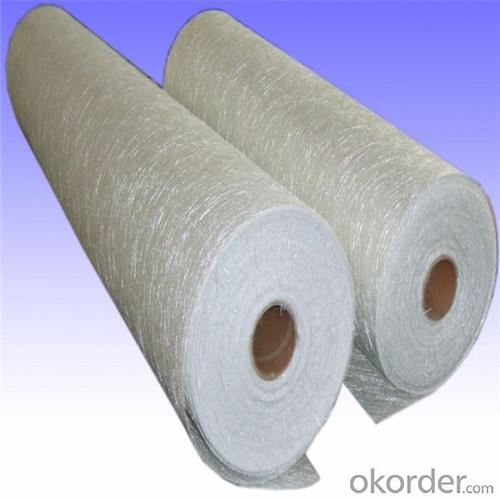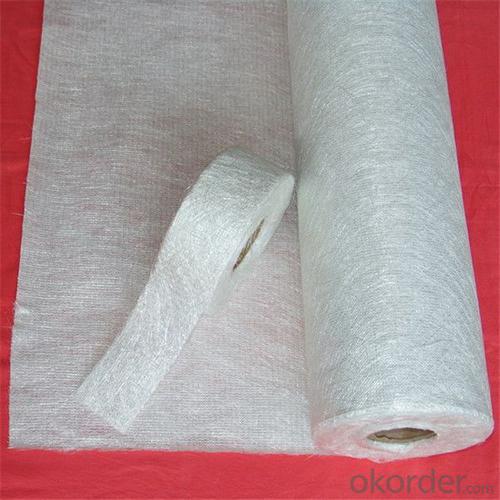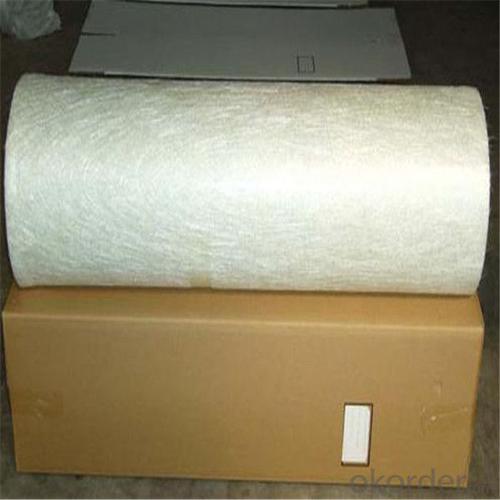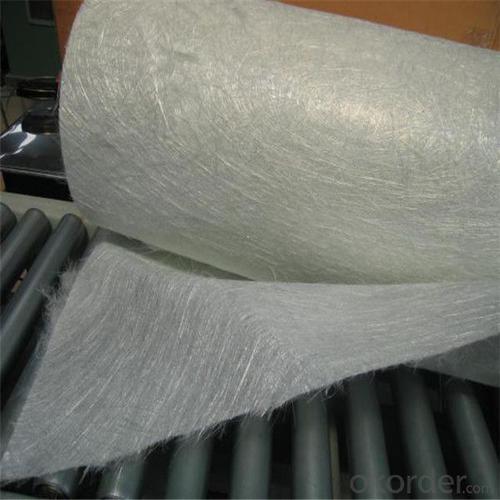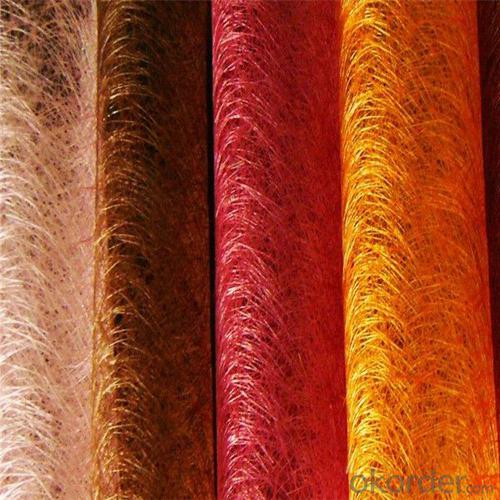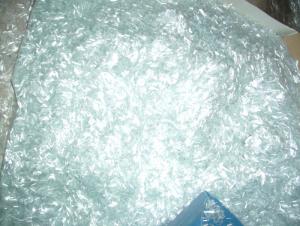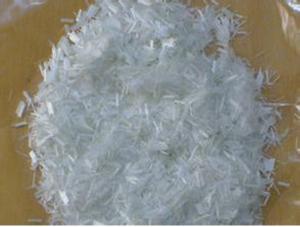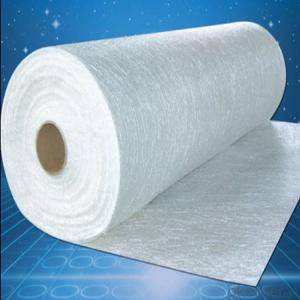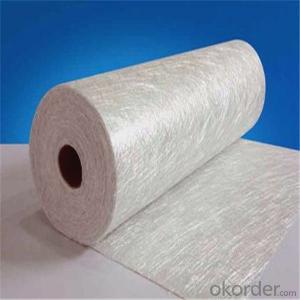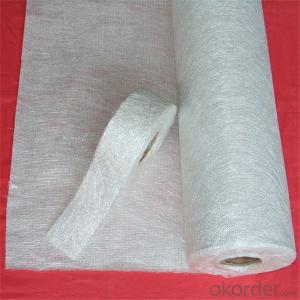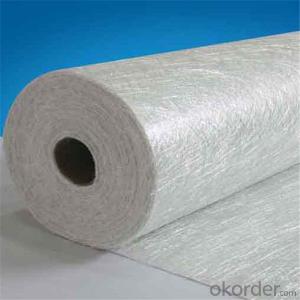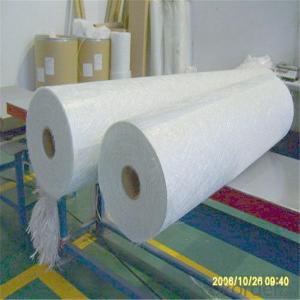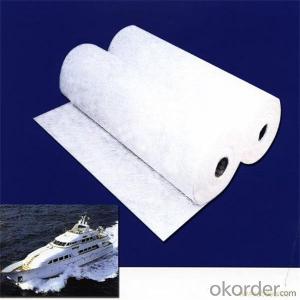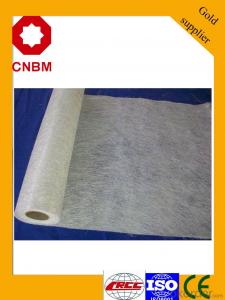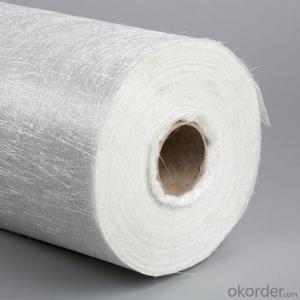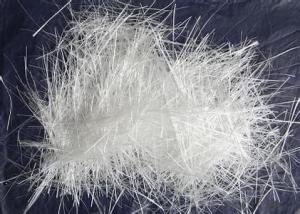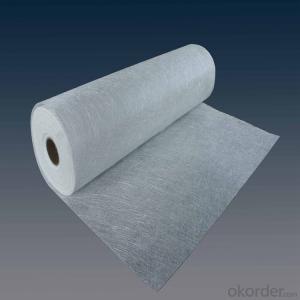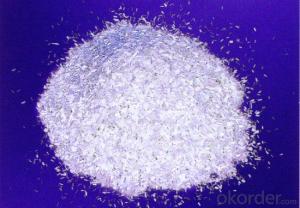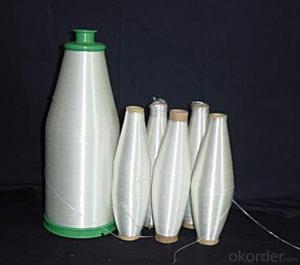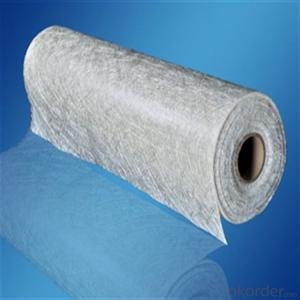Fiberglass Chopped Strand 100g E-Glass Glassfiber Chopped Stand Mat
- Loading Port:
- Tianjin
- Payment Terms:
- TT OR LC
- Min Order Qty:
- 100 m.t.
- Supply Capability:
- 100000 m.t./month
OKorder Service Pledge
OKorder Financial Service
You Might Also Like
Quick Details
| Technique: | Chopped Strand Fiberglass Mat (CSM) | Dimensions: | 225g/m2-900g/m2 | Fiberglass Type: | E-Glass |
| Place of Origin: | China (Mainland) | Brand Name: | cnbm | Model Number: | 300G-900G |
| moisture: | ≤0.2% | combustion content: | 2.1-6.3% | binder type: | emulsion or powder |
| width: | 1040,1270,2080mm |
Packaging & Delivery
| Packaging Details: | plastic bag then carton then pallet |
| Delivery Detail: | 15 days after payment |
Advantage
1. Chopped strand mat is made up from fiberglass chopped strands bonded with powder binder or emulsion binder
2. Wet out faster and easy of handling
3. Good choppability
4.thickness uniformity
Apllication
fiberglass chopped strand mat
It is used for processing and manufacturing FRP products with getting through hand lay up process, filament winding process and press molding. Typical products is including bathroom accessories, pipe, building material, automobile, furniture, vessel, cooling towers and other FRP products
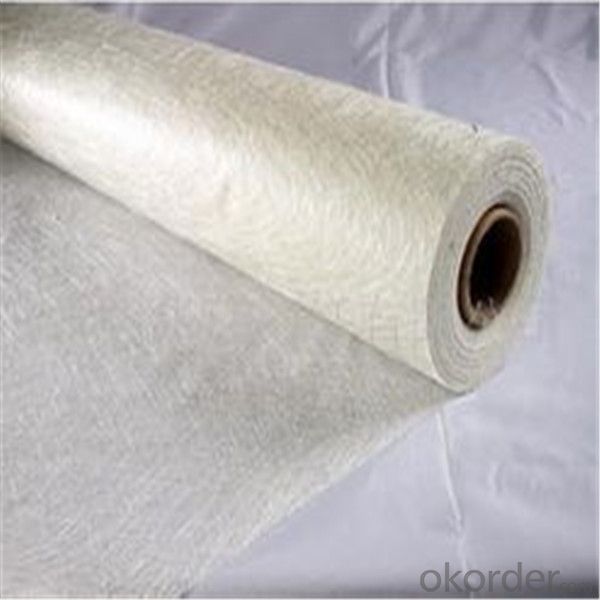
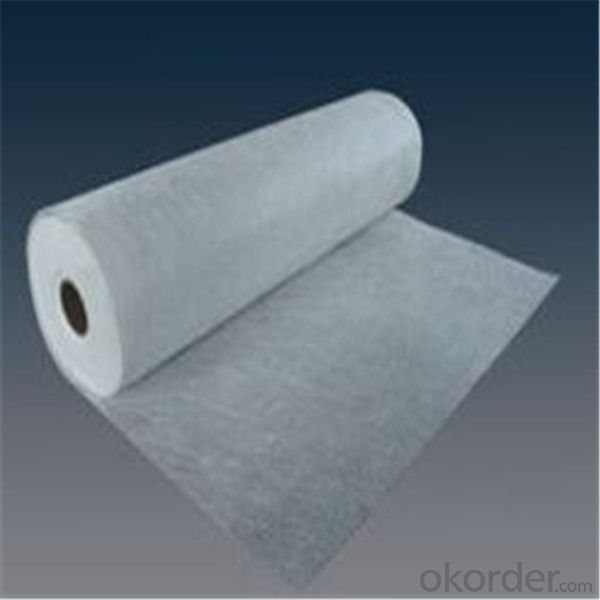
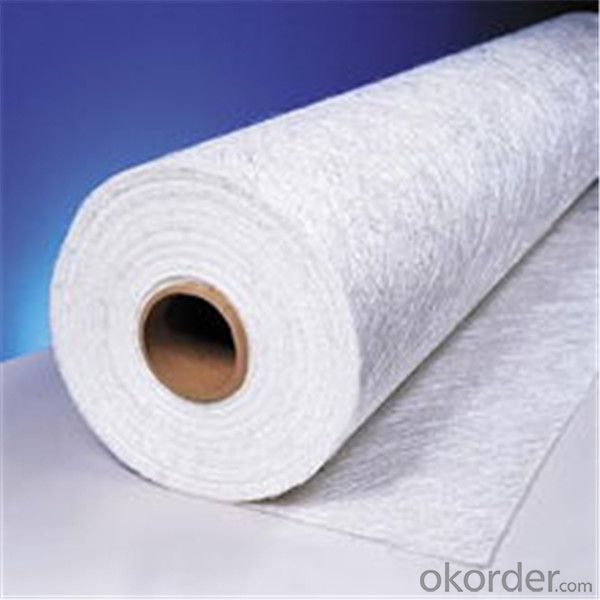
- Q: How does the fiber-to-resin adhesion affect the properties of chopped strand composites?
- The fiber-to-resin adhesion is crucial in determining the properties of chopped strand composites. A strong adhesion between the fibers and the resin matrix enhances the overall strength, stiffness, and durability of the composite material. It helps in efficiently transferring load between the fibers and the resin, leading to improved mechanical properties and resistance to impact, fatigue, and creep. Additionally, a good adhesion ensures better stress distribution within the composite, reducing the likelihood of delamination or fiber pull-out. Hence, the fiber-to-resin adhesion plays a significant role in optimizing the performance and reliability of chopped strand composites.
- Q: What are the manufacturing tolerances for fiberglass chopped strand?
- The fiberglass chopped strand's manufacturing tolerances differ based on the specific product and its intended application. Nonetheless, in general, the tolerances are relatively stringent to guarantee consistent quality and performance. Typically, the length of the individual chopped strands falls within a narrow range, like +/- 5 mm or +/- 0.5%. This ensures uniformity in the reinforcement material, which is crucial for achieving desired mechanical properties in composite products. Similarly, the diameter or thickness of the chopped strands is controlled within specific tolerances to ensure consistent performance. This can be specified as a percentage deviation or an absolute value, such as +/- 0.1 mm or +/- 5%. Additional manufacturing tolerances for fiberglass chopped strand may include parameters like moisture content, fiber content, and tensile strength. These parameters are closely monitored during production to meet the desired specifications and ensure the final product's quality. It is important to note that the specific tolerances for fiberglass chopped strand may vary among manufacturers and can be customized to meet the requirements of different industries and applications. Therefore, when selecting a supplier, it is crucial to consider the specific tolerances and quality control measures they adhere to, as well as any industry standards or customer specifications that need to be met.
- Q: Is fiberglass chopped strand suitable for thermal insulation?
- Indeed, fiberglass chopped strand proves to be an ideal option for thermal insulation purposes. Renowned and extensively utilized, fiberglass stands out due to its exceptional thermal qualities. Its low thermal conductivity allows for efficient heat transfer prevention, ensuring the maintenance of desired temperatures within confined areas. Employing fiberglass in its chopped strand configuration further enhances its insulation capabilities, as it can be effortlessly packed or blown into cavities, forming a seamless and efficient barrier. Moreover, fiberglass chopped strand insulation guarantees safety, as it is non-combustible, rendering it a secure choice for thermal insulation across diverse industries and applications.
- Q: Does fiberglass chopped strand improve the wear resistance of composite materials?
- Yes, fiberglass chopped strand does improve the wear resistance of composite materials. Fiberglass chopped strand is made up of small, randomly oriented fibers that are added to the composite matrix. These fibers enhance the overall strength and durability of the composite material, making it more resistant to wear and tear. The high tensile strength and excellent mechanical properties of fiberglass chopped strand help to distribute stress and impact forces more evenly throughout the composite, reducing the likelihood of surface damage and improving its ability to withstand repeated use and abrasion. Additionally, the presence of fiberglass chopped strand can also enhance the stiffness and impact resistance of the composite, further enhancing its wear resistance. Therefore, incorporating fiberglass chopped strand into composite materials is an effective way to improve their wear resistance and extend their lifespan.
- Q: What are the applications of fiberglass chopped strand?
- Fiberglass chopped strand has a wide range of applications due to its unique physical and mechanical properties. Here are some common applications: 1. Reinforcement in composite materials: Fiberglass chopped strand is extensively used as reinforcement in composite materials such as fiberglass-reinforced plastics (FRP). The strands are mixed with resin to create a strong and lightweight material that is widely used in industries like automotive, aerospace, construction, and marine. 2. Insulation: Fiberglass chopped strand is commonly used as insulation material in various applications. It is an excellent thermal insulator, making it suitable for insulating walls, roofs, pipes, and appliances. Fiberglass insulation also provides soundproofing properties, making it ideal for applications requiring noise reduction. 3. Filtration and separation: The fine fibers of fiberglass chopped strand are often used in filtration and separation processes. They can be manufactured into filter media to remove impurities from air, water, oil, and other fluids. Fiberglass filters are commonly used in HVAC systems, industrial applications, and even in face masks. 4. Electrical insulation: Due to its high dielectric strength and resistance to electrical conductivity, fiberglass chopped strand is widely used as electrical insulation material. It is commonly used in electrical cables, transformers, circuit boards, and other electrical components to protect against electrical current leakage and ensure safety. 5. Reinforcement in concrete: Fiberglass chopped strand is also used as a reinforcement material in concrete structures. It helps increase the strength and durability of concrete, making it suitable for applications like bridges, roads, tunnels, and buildings. Fiberglass-reinforced concrete (FRC) offers enhanced resistance to cracking, impact, and corrosion. 6. Automotive applications: Fiberglass chopped strand is extensively used in the automotive industry for various applications. It is commonly used in the manufacturing of car bodies, interior panels, bumpers, and other components. Its lightweight and high strength properties make it an ideal material for improving fuel efficiency and overall performance. These are just a few examples of the applications of fiberglass chopped strand. Its versatility, durability, and cost-effectiveness make it a preferred choice for various industries and applications.
- Q: How does the diameter of fiberglass chopped strand affect its properties?
- The diameter of fiberglass chopped strand plays a crucial role in determining its properties. Generally, a smaller diameter results in increased flexibility and improved mechanical properties such as strength and toughness. This is because a smaller diameter allows for a higher number of individual strands to be packed tightly together, providing better reinforcement. On the other hand, a larger diameter chopped strand may offer increased stiffness but could compromise the overall mechanical properties. This is because a larger diameter would reduce the number of strands that can be packed in a given area, resulting in lower reinforcement capabilities. Additionally, the diameter of fiberglass chopped strand also affects the surface area available for adhesion with resin or other matrix materials. A smaller diameter provides a larger surface area, allowing for better bonding and adhesion strength between the fibers and the matrix. It is worth noting that the specific application and requirements of the fiberglass chopped strand should be considered when selecting the appropriate diameter. Different applications may require different properties, and the diameter of the chopped strand can be adjusted accordingly to meet those specific needs.
- Q: Can fiberglass chopped strand be used in the production of building facades?
- Yes, fiberglass chopped strand can be used in the production of building facades. It is a versatile material that offers excellent strength, durability, and resistance to various environmental factors. It can be used in composite panels or as reinforcement in cementitious or resin-based systems for building facades.
- Q: Is fiberglass chopped strand suitable for water treatment applications?
- Yes, fiberglass chopped strand is suitable for water treatment applications. Its high strength and corrosion resistance make it an ideal material for constructing water treatment tanks, pipes, and other equipment that come into contact with water. Additionally, fiberglass chopped strand is non-toxic and does not leach any harmful substances into the water, making it a safe choice for water treatment applications.
- Q: How does the chemical resistance of the chopped strand affect its performance?
- The performance of the chopped strand is heavily influenced by its chemical resistance. Chopped strands are commonly utilized as reinforcements in composite materials, like fiberglass, to enhance their durability and strength. These materials often come into contact with different chemicals, including acids, alkalis, solvents, and corrosive substances. The chemical resistance of the chopped strand refers to its ability to endure the harmful effects of these chemicals over time. If the chopped strand exhibits good chemical resistance, it will be capable of maintaining its physical properties and integrity when exposed to harsh chemical environments. This implies that it will not experience considerable degradation, weakening, or performance loss upon contact with these chemicals. Conversely, if the chopped strand has poor chemical resistance, it may deteriorate, swell, or even dissolve when exposed to specific chemicals. This can result in a reduction in strength, stiffness, and other mechanical properties, ultimately impacting the overall performance of the composite material. Hence, it is desirable to have a high level of chemical resistance in the chopped strand to ensure that the composite material retains its structural integrity and performance in chemical environments. This allows the material to withstand exposure to various chemicals without suffering significant damage or property loss. Consequently, it becomes suitable for a wider range of applications and prolongs its service life.
- Q: How does the quality of fiberglass chopped strand affect its performance?
- The quality of fiberglass chopped strand directly affects its performance in several ways. Firstly, the length and consistency of the strands play a significant role in determining the mechanical properties of the final product. Longer strands tend to provide better reinforcement and increased strength, while shorter strands may result in a weaker and less durable material. Additionally, the diameter and uniformity of the individual strands impact the overall performance of fiberglass. Thinner and more consistent strands enable better resin impregnation during the manufacturing process, leading to improved adhesion between the fibers and the matrix. This, in turn, enhances the material's mechanical properties, such as tensile strength, flexural strength, and impact resistance. Furthermore, the quality of the surface treatment applied to the chopped strand is crucial. A proper surface treatment ensures good compatibility between the fiber and the resin, allowing for better wetting and dispersion. This results in improved interfacial bonding and overall mechanical performance of the final composite product. In summary, the quality of fiberglass chopped strand directly affects its performance by influencing the length, diameter, consistency, and surface treatment of the fibers. These factors determine the material's mechanical properties, adhesion, and compatibility with the matrix resin, ultimately impacting its overall strength, durability, and performance characteristics.
Send your message to us
Fiberglass Chopped Strand 100g E-Glass Glassfiber Chopped Stand Mat
- Loading Port:
- Tianjin
- Payment Terms:
- TT OR LC
- Min Order Qty:
- 100 m.t.
- Supply Capability:
- 100000 m.t./month
OKorder Service Pledge
OKorder Financial Service
Similar products
Hot products
Hot Searches
Related keywords
